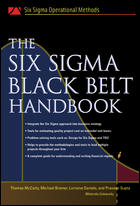Feuds, politics and turf wars waste effort and distract personnel from serving customers and generating revenue.
An organization should multiply individuals’ efforts. Personnel create goods and services, and customers transform them into revenues by purchasing them. Viewed as a supply chain, departments within an organization are consumers of other departments’ products.
Chronic unresolved conflict has a high human cost. Workers leave dysfunctional organizations. Often, they want to escape a bad manager more than they want to flee their job. When they leave, they take their institutional knowledge with them. Sometimes, it cannot be replaced.
Also, there is a serious financial cost. Companies that hire replacement workers incur recruitment and training costs. If the company’s culture is the root cause of turnover, firing workers and hiring replacements will not resolve the underlying problem.
Conflict is inevitable, and companies should continuously nurture a culture of conflict resolution. It is not enough to have a grievance procedure in the company handbook and pronounce that the organization is a wonderful place to work. Thomas Pyzdek’s “The Six Sigma Handbook” (3rd ed.) explains the importance of conflict resolution training. Personnel should be trained to recognize and understand the causes of conflicts with their peers, subordinates and superiors. A lack of “conflict competence” and poor implementation of a good program undermines its credibility. Morale suffers because personnel realize that management is just mouthing empty words.
Conflict and disagreement are not the same. As recounted by Peter Drucker, when Alfred Sloan was the CEO of General Motors, he held a meeting where all of the executives agreed on a decision. Sloan said, “Then, I propose we postpone further discussion of this matter until our next meeting to give ourselves time to develop disagreement and perhaps gain some understanding of what the decision is all about.” Rational people can disagree. To the extent dissent exists, management should try to organize it in a constructive manner.
Six Sigma organizations harness contrasting ideas and opinions through brainstorming, analysis and prioritizing. Thoughtful executives do not have to suffer fools who try to disrupt the business, but they should try to understand earnest dissent and understand why it is valid or invalid.
Conflict competent organizations address conflicts at an early stage. Mediation is a form of alternative dispute resolution (ADR). When parties reach an impasse and negotiation breaks down, a neutral third party assists them. Usually, a mediator tries to uncover the parties’ underlying interests and facilitate discussion.
Some company handbooks describe a grievance procedure. Usually, parties who grieve express negative emotions to someone in authority and ask that their “opponent” be punished. They want to be vindicated and to assign blame.
A resolution procedure is not adversarial and does not assign blame. It attempts to resolve problems. Some people believe that mediators just “split the baby.” Simply suggesting meeting halfway may not be effective. Where the parties’ goals are not mutually exclusive, each party may be able to obtain what it wants.
In “Getting to Yes,” Roger Fisher and William Ury describe an example where two sisters are fighting over an orange. Their mother cuts it in half. One sister eats the fruit and throws away the peel. The other uses the peel for a cake recipe and throws away the fruit. Had the mother explored their underlying interests, each could have had 100% of what they desired.
Companies should establish a single coherent resolution procedure. By describing one procedure as formal and another as informal, personnel may ignore the informal one. There is a risk that a traditional grievance procedure will muscle out a sound resolution procedure. Personnel must feel that by using the procedure, they won’t risk retaliation. Everyone must know how it works, its purpose, and how to use it. It must be used consistently, or it will become obsolete.
Reducing conflict and harnessing disagreement require serious effort, but the costs of conflict and friction are too high to ignore. Everyone should focus on the customer. That increases profits, value and the durability of the business.



